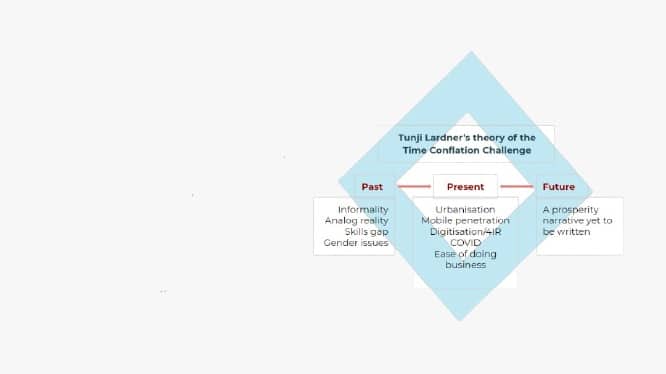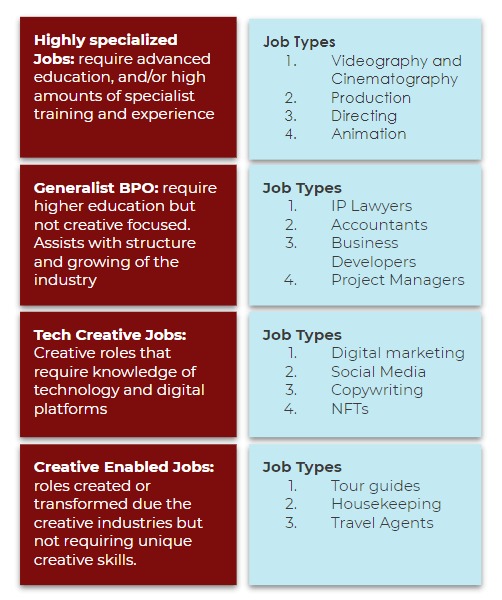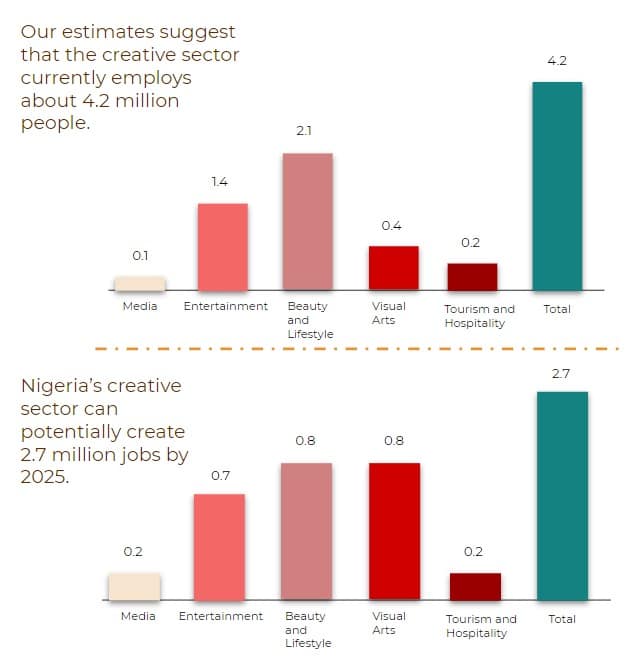Nigeria’s creative sector holds tremendous potential to unlock the country’s economy and provide increased employment opportunities for young people. The projections are promising – the sector is expected to be worth over 6 billion US Dollars by 2021. At the same time, WizKid and Burna Boy’s recent wins at the Grammy is indicative of this potential. But, there is a prosperity narrative about Nigeria’s creative sector that is yet to be written.
People who write and comment about the creative sector have continued to express optimism about the promise and prospects inherent in the sector. For instance, the country’s media and entertainment market is anticipated to be the fastest growing across the globe and the sector is said to be the second largest employer of labour in Nigeria after agriculture. However, the sector is plagued with myriads of challenges making it difficult to contemplate its prospects.
The biggest challenge therefore is, how do we negotiate the accumulated challenges that have continued to bedevil the sector with the current opportunities that exist while also contemplating the future of the sector?
 Using Tunji Lardner’s theory of the time conflation challenge, Nigeria’s creative sector perhaps, can be said to exist in a time warp, having to simultaneously deal with the problems of the past, a compounding of opportunities and challenges of the present as it contemplates the future; leaving a begging question, are we ready for the prosperity ahead?
Using Tunji Lardner’s theory of the time conflation challenge, Nigeria’s creative sector perhaps, can be said to exist in a time warp, having to simultaneously deal with the problems of the past, a compounding of opportunities and challenges of the present as it contemplates the future; leaving a begging question, are we ready for the prosperity ahead?
For one, young people (below age 35years) have been described as digital natives, but COVID-19 has exposed the digital divide that exists amongst the country’s young population. A lot of this is rooted in poverty and the gaps in the educational system but it is also compounded by informality, the lack of essential skills, insufficient funding, the gender gap, a backlog of analog reality and a derogatory mind-set about creatives. Informality and the lack of structure within the sector, for instance, has perpetuated piracy and reduced the investment potential of the sector. Similarly, the complex nature of the value chain remains a deterrent for investors as assessing risks and projecting gains appear problematic.
Nevertheless, recent trends such as advancement in technology, the fourth industrial revolution, increasing internet and mobile penetration as well as urbanization and an increasing youth population presents a unique opportunity to revolutionize the creative sector and accelerate the industry’s footprint on the global stage. Advancement in mobile and internet penetration is already demonstrating useful possibilities, such that in the wake of the pandemic, creative industries were able to take advantage of technology to innovate in an attempt to remain relevant and sustain growth
However, the sector is stretching itself as it attempts to simultaneously deal with current and past problems while also trying to take advantage of recent trends. For instance, while urbanization appears to be advancing growth and consumer expenditure, creating jobs for an increasing youth population of over 100 million presents its own challenges. The problem in this regard is wicked because of the digital divide that has exposed the backlog of Nigeria’s analog reality – many young people cannot afford a smart phone let alone afford the cost of data (See GSMA and Techpoint). At the same time, there are gaps in school curricular, especially in the area of digital and soft skills.
The good news is that the creative sector holds the potential to create jobs for young people. Our estimates suggest that the creative sector currently employs about 4.2 million people across five industries including Media, Entertainment. Beauty and Lifestyle, Visual Arts, as well as Tourism and Hospitality. Our projections also suggest that the creative sector can potentially create an additional 2.7 million jobs in the next 4-5 years.


Where will these jobs come from? One might ask. They will be from the highly specialized roles such as videography and animation; generalist roles such as project managers and accountants; tech creative roles such as digital marketing, the sales of non-fungible tokens (NFTs); and creative enabled jobs such as tour guides and housekeepers.
To make this happen, the creative sector will require substantial investments in skills development, prioritize regulation, improve working conditions for women while also supporting the sector with funding and enabling a business environment that supports innovation. Investment in skills development through the inclusion of soft skills and digital skills into the curriculum presents an opportunity to solve the skills gap and reduce the backlog of an analog reality.
From our findings across the 5 creative industries, we found skills gaps in areas such as cinematography and videography, project management, marketing, customer service, graphic design and sewing. There is also a significant demand gap in roles such as project management, marketing, editing, sewing, writing and social media marketing.


Be that as it may, we will need to do more for women. Our research suggests that while certain social settings may limit women’s career aspirations to certain roles like teaching and nursing, the creative sector provides an escape route for women to find new expressions in the way that they think about work. Hence, supporting the sector through a gender-responsive policy focused on leveraging women’s interests while addressing women-specific needs will be helpful. This is because the creative sector provides more opportunities for women due to low barriers to entry, entrepreneurship and work flexibility.
Also, dealing with informality and structuring the sector will not only improve revenue but also contribute to creating employment and entrepreneurship opportunities. It will equally support in improving the wage structure as well as solving the problem of youth unemployment and diversification of the economy from oil towards an alternative pathway towards prosperity.
Writing a prosperity narrative for Nigeria’s creative sector will require that all these distortions be addressed. We clearly have to move forward and there is absolutely nothing wrong with being optimistic about the future. However, that optimism comes with a responsibility. But, are we ready for the prosperity ahead?
Download the the Nigerian Creative Sector Skills Gap Report here





